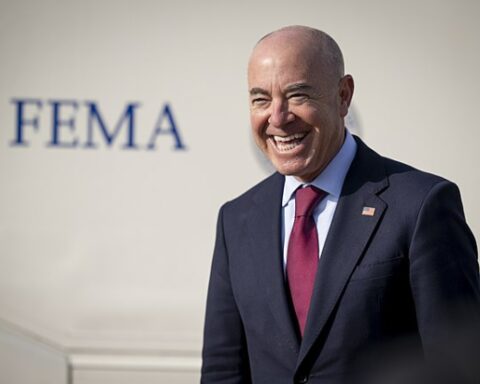The Congressional Budget Office has caused panic among veterans. As part of its annual collection of policy options given to Congress to help lower the debt, the bean counters in DC have proposed a radical option: no longer paying disability benefits to those injured during service to the country if their household hits a certain financial threshold.
CBO first described how the current system works and notes how much money the federal government spends on the program. “In 2021, 5.2 million veterans received disability compensation from VA because of medical conditions or injuries that occurred or worsened during active-duty service; about 280,000 of them received compensation for the first time that year. Service-connected disabilities vary widely in severity and type and include the loss of a limb, anxiety, and hearing loss. VA determines whether a veteran has a service-connected disability and assigns a rating to each condition on the basis of the severity of the disability from zero (little or no impairment) to 100 percent (highest impairment) in increments of 10. The amount of base compensation veterans receive depends on their combined (overall) rating. VA disability compensation is tax free, indexed to inflation, and—with some exceptions—continues in the form of a monthly annuity for the rest of the veteran’s life. In calendar year 2022, base compensation rates ranged from $150 to $3,330 per month.
VA disability compensation has increased substantially faster than inflation, both in total spending and on a per-recipient basis, a trend that CBO expects to continue. In 2021, VA paid about $110 billion in disability benefits, four times the amount that it paid in 2000 (after removing the effects of inflation), even though the number of veterans in the United States declined by more than 30 percent, from about 26 million to 19 million. Spending per recipient (after removing the effects of inflation) rose from about $11,000 in 2000 to nearly $22,000 in 2021.
Lawmakers could make several structural changes to VA’s disability compensation program to limit future spending growth on the program. This option focuses on one approach: means-testing VA disability compensation.”
It then goes into the plan it has pitched to Congress–one that would strip those who gave part of their well-being for their country what they deserve. The total number of impacted veterans, according to CBO’s own accounting, would be roughly 1.5 million people who served in the armed forces.
CBO continued, “Under this option, VA would means-test all current and prospective recipients of VA disability compensation beginning in January 2024; after that date, veterans would receive full payments only if their gross household income in the prior calendar year was less than an inflation-indexed threshold for that year. Disability benefits would be phased out at a constant rate for veterans with income above the threshold: For every additional two dollars of gross household income, disability compensation would decrease by one dollar. Under that phaseout, veterans whose gross household income was $170,000 or higher in calendar year 2023 and who would have received the average annual payment would no longer receive any disability compensation from VA in calendar year 2024. There would be no adjustment in the income threshold for household size. The current eligibility requirements and benefits would not change for the surviving family members of a veteran or service member.
The income threshold below which veterans would receive full benefits in 2024 would be set at $125,000. That threshold corresponds to the 70th percentile of total household income for the entire country in 2019, according to data from the U.S. Census Bureau, with adjustments for inflation to reach the threshold value applicable to 2024 benefits. Roughly 1.5 million of the 5 million veterans receiving disability compensation had household income that exceeded the 70th percentile of income in the United States in 2019, excluding VA disability payments.”
Hot Air explained what this proposal means for veterans, writing “Take their means testing. I realize it’s bean-counting, but what they’ve said is that they’re going to use gross household income to determine where a disabled vet receiving VA payments lands. He continues getting his stipend, the amount is reduced, or they don’t get them at all, because the total amount of income for the household – not the veteran’s income – exceeds what this new rule would have determined to be a reasonable threshold.
Were this rule to be adopted, you could conceivably have a disabled veteran missing a limb whose wife is a, say, bank executive and he would lose his disability because of her salary. If you live, say, in California or New York state, $170K a year for a household is middle class, and now you might lose that extra you earned with your service? That they owe you for the scars on your knees or in your head?”
How much money would be saved? Well….
Over 9 years it would save less money than we casually send to Ukraine on a Tuesday. pic.twitter.com/7Krz26qgrg
— MetaThor 🐊 (@MetaThor4) March 22, 2023
Over the last three presidents, the deficit has ballooned to the point where the United States may pay more to cover interest on the debt than it does for the entire military budget.
“The Peter G. Peterson Foundation figures that interest payments will run $8.1 trillion over the coming decade. That’s an average of $810 billion a year. By 2032 interest payments will be about $1.2 trillion a year, above expected military outlays,” according to Cato.
Those payments will only increase more quickly as the Federal Reserve raises interest rates to try and stop inflation.
On Wednesday, the Federal Reserve Chairman Jerome Powell increased rates by a quarter of a percent.
This article originally appeared on New Conservative Post. Used with Permission.
[Read More: Mexico Seizes American Company’s Property As Biden Yawns]






